
The Many Holes In 'Doughnut Economics'
The people who invented these methods (Paul Samuelson, Ken Arrow, etc.) were not very libertarian at all. But in the 70s and 80s, a bunch of conservative-leaning economists used the models to claim that free markets were great.
The models turned out to be pretty useful for saying“free markets are great”, simply because math is hard - it's a lot easier to mathematically model a simple, well-functioning market than it is to model a complex world where markets are only part of the story, and where markets themselves have lots of pieces that break down and don't work.[1 ]
So the intellectual hegemony of this type of mathematical model sort of dovetailed with the rise of libertarian ideology, neoliberal policy and so on. A lot of people sensed that something was amiss and set out to find problems with the story that the libertarian economists were telling.
These generally fell into two camps. First, there were people who worked within the 1970s-style mathematical econ framework, stayed in academia, and tried to change the dominant ideas from inside the system.
They came up with things like public goods models, behavioral economics, incomplete market macroeconomics and various game-theory models in which markets fail. When the computer revolution made it a lot easier to do statistical analysis, they started to do a lot more empirical work and a lot less theory:
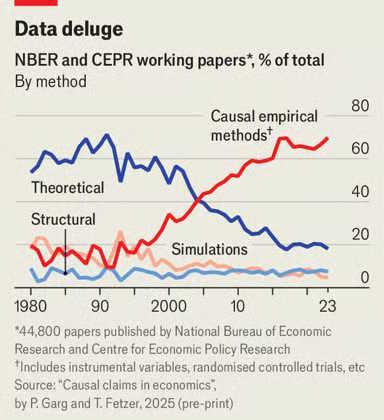
Source: The Economist
These changes also moved the field more to the left politically. To take just one small example, you can see a lot more economists writing about inequality in recent years:
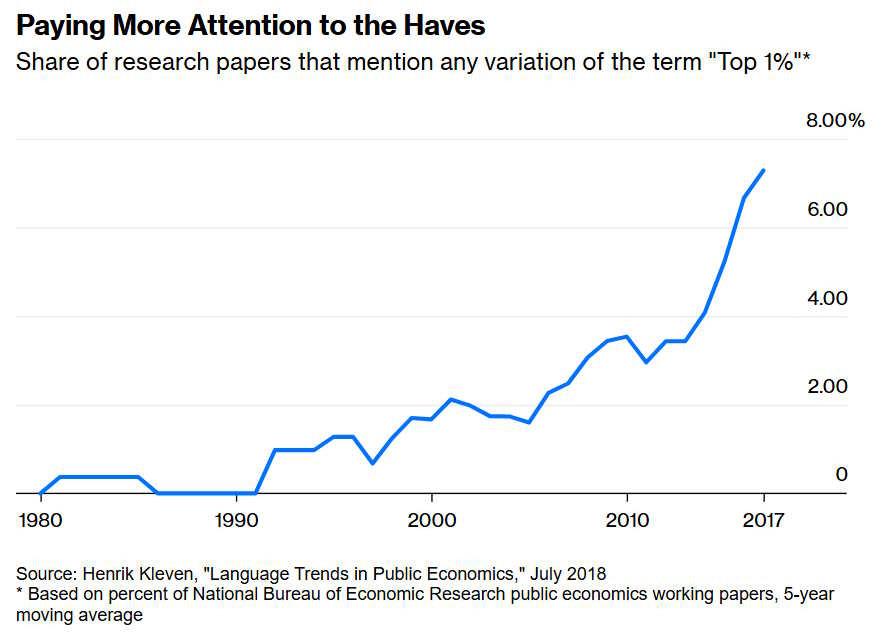
Source: Noah Smith
But there was also a second group of people who fought against the intellectual hegemony of the libertarian economists.
They rejected the 1970s-style math models that the profession insisted on using - either because they didn't think it made sense to model an economy using that sort of math, or because they couldn't personally handle the math - and instead sought insight in alternative disciplines like ecology, sociology, history, etc.
These folks - who often called themselves“heterodox” - tended to lean even more strongly to the left, and often unabashedly mixed their methodological critiques with socialist or other leftist politics.
The heterodox folks had a problem. They had a huge grab-bag of critiques, but nothing really tied those critiques together. There was no new paradigm - no simple new way of thinking about economics. Marxism had provided that idea for much of the 20th century, but Marxism was defunct.
That lack of a unifying framework weakened the heterodox cause, because it still seemed to leave 1970s-style free-market economics as the“base case” - the simple core idea that people kept returning to.
It's relatively easy to explain to a bright 21-year-old how supply and demand work in a simple competitive“Econ 101” model; it's a lot harder to explain two dozen ways in which that model fails.
So for years, the heterodox people have been writing versions of the same old list of critiques, while searching for someone who could synthesize this list into a simple new paradigm.[1 ]
This call was answered by Kate Raworth, a British researcher who has worked for international development agencies and for Oxfam before getting various posts at European universities. In 2017, Raworth wrote a book called“Doughnut Economics: Seven Ways to Think Like a 21st-Century Economist“, which promised to replace the old neoclassical economic paradigm with something newer and better.
Although this book is now eight years old, a number of friends have recently asked me to read and review it. So here is that review.
“Doughnut Economics” is based on an important insight: Diagrams are powerful marketing tools. Raworth, seeing how the basic supply-and-demand graph and the circular flow diagram had helped popularize neoclassical economics[2] , set out to create a diagram that was as simple and as powerful as those. She writes:
Most importantly, Raworth came up with something she calls the“Doughnut” - a set of concentric circles that illustrates the tradeoff between the environment and human prosperity:
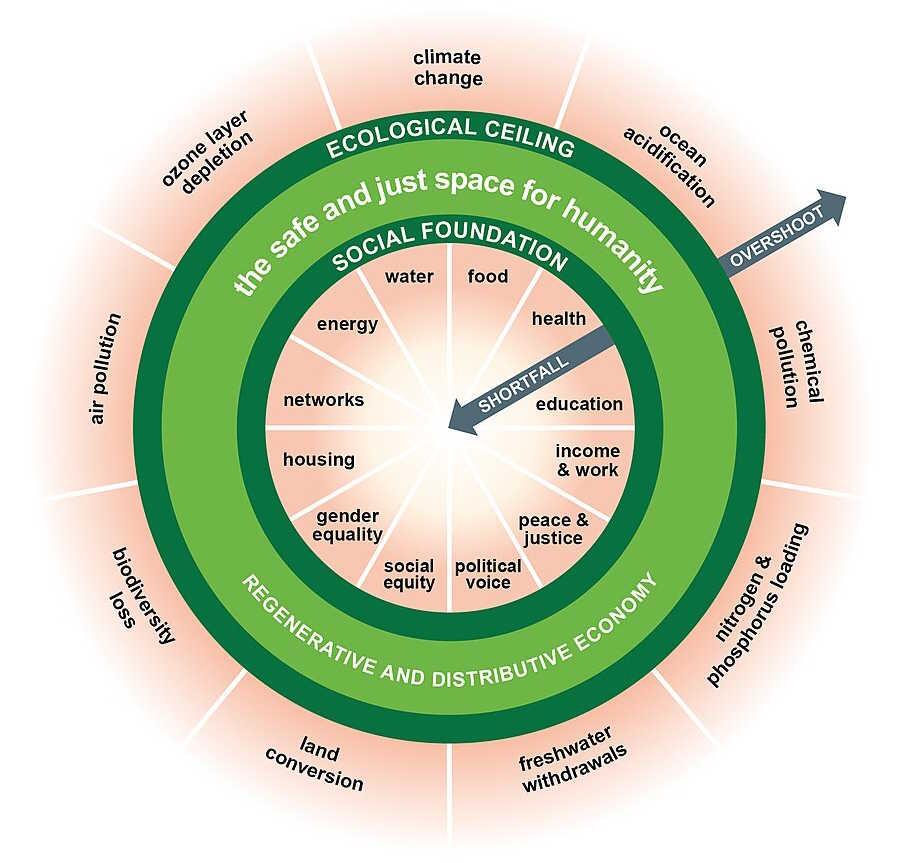
Source:“Doughnut Economics”, via Wikipedia
Going towards the center of this diagram represents more human poverty; when you go inward beyond the dark green band, you deprive and impoverish humans. Going outward represents more human prosperity; when you go out beyond the dark green band, you despoil the environment.
In fact, this tradeoff is very real. Natural resources are plentiful, but not infinite; produce too much in the present, and you'll leave little for future humans (and other animals) to enjoy. Furthermore, plenty of industrial activity creates negative externalities, like when burning fossil fuels emits carbon and disrupts the climate. So the Doughnut depicts something that we really do need to think about.
In fact, mainstream economics already has a simple way of depicting this in a memorable picture - a production possibilities frontier . A PPF illustrates society's tradeoff between two things. You can draw a PPF that illustrates the tradeoff between production and the environment; in fact, introductory econ courses do this all the time:
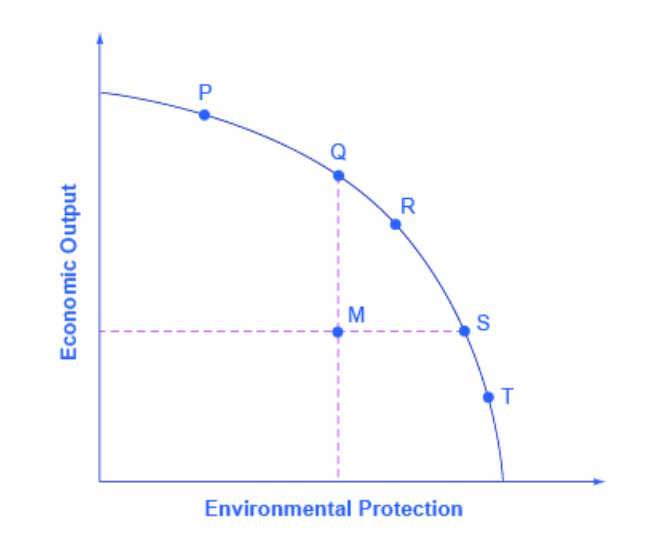
Source: Lumen Learning
You could label this diagram with every single one of the items that Raworth puts in her Doughnut - food, housing, biodiversity, climate change, and all the rest. You could label one part of the curve“the safe and just space for humanity.”
It would be easier to read. But Raworth is interested in intellectual revolution, not evolution; the humble PPF is disqualified because of its association with the existing mainstream, and so she never even mentions it in her book.
Raworth presents the Doughnut as an alternative to the idea of infinite exponential economic growth, which she sees mainstream economics as supporting. I suspect that this explains the book's popularity.
In recent years, the idea of degrowth has gained popularity, especially in the UK and North Europe. But on some level, people realize that degrowth is very bad for developing countries , since economic growth - not foreign aid or remittances - is the only thing that has ever been able to durably raise people out of desperate poverty.
So even lefty intellectuals in the UK or Sweden realize that the idea of degrowth, applied across the world, would be a monstrous crime against humanity.
Raworth is sympathetic to the degrowthers, but she is not one of them. She spends a lot of time discussing the limits of GDP as an economic goal, talking about the tradeoff between growth and the environment, and arguing that exponential growth has to end eventually. But she also recognizes the importance of material prosperity for people in poor countries:
This is my view as well, and it's the only reasonable conclusion for anyone who has worked in international development (as Raworth has). A lot of people who are dissatisfied with GDP as a measure of human flourishing have spent a lot of time creating alternative measures, like the Human Development Index.
These always end up being very strongly correlated with GDP. For example, here's HDI:
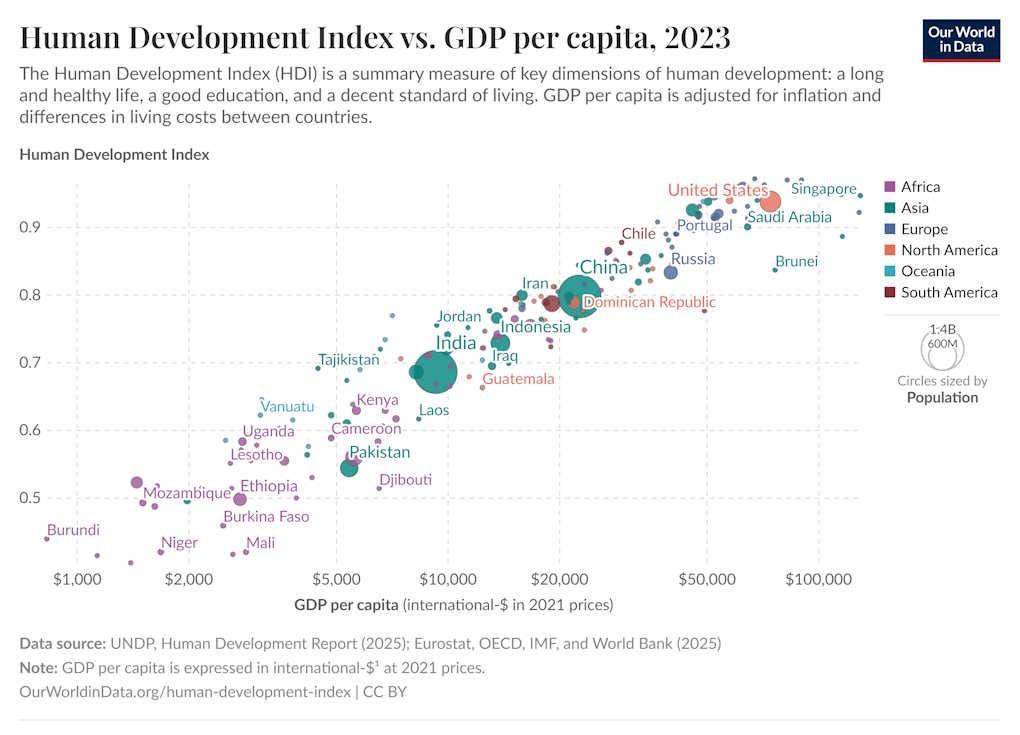
It looks like the correlation flattens out a bit at the top, but that could just be because the index can't go higher than 100; if you let it go higher, the correlation might persist even at high levels of income.

Legal Disclaimer:
MENAFN provides the
information “as is” without warranty of any kind. We do not accept
any responsibility or liability for the accuracy, content, images,
videos, licenses, completeness, legality, or reliability of the information
contained in this article. If you have any complaints or copyright
issues related to this article, kindly contact the provider above.

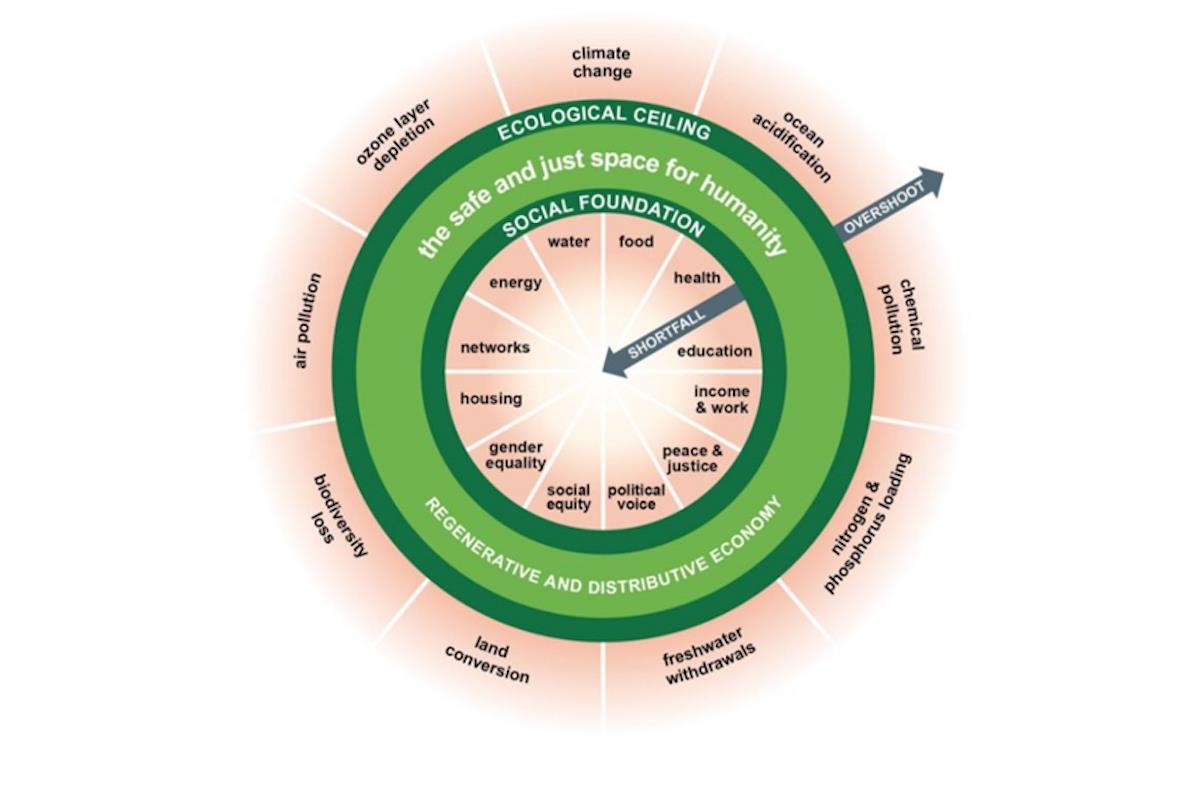

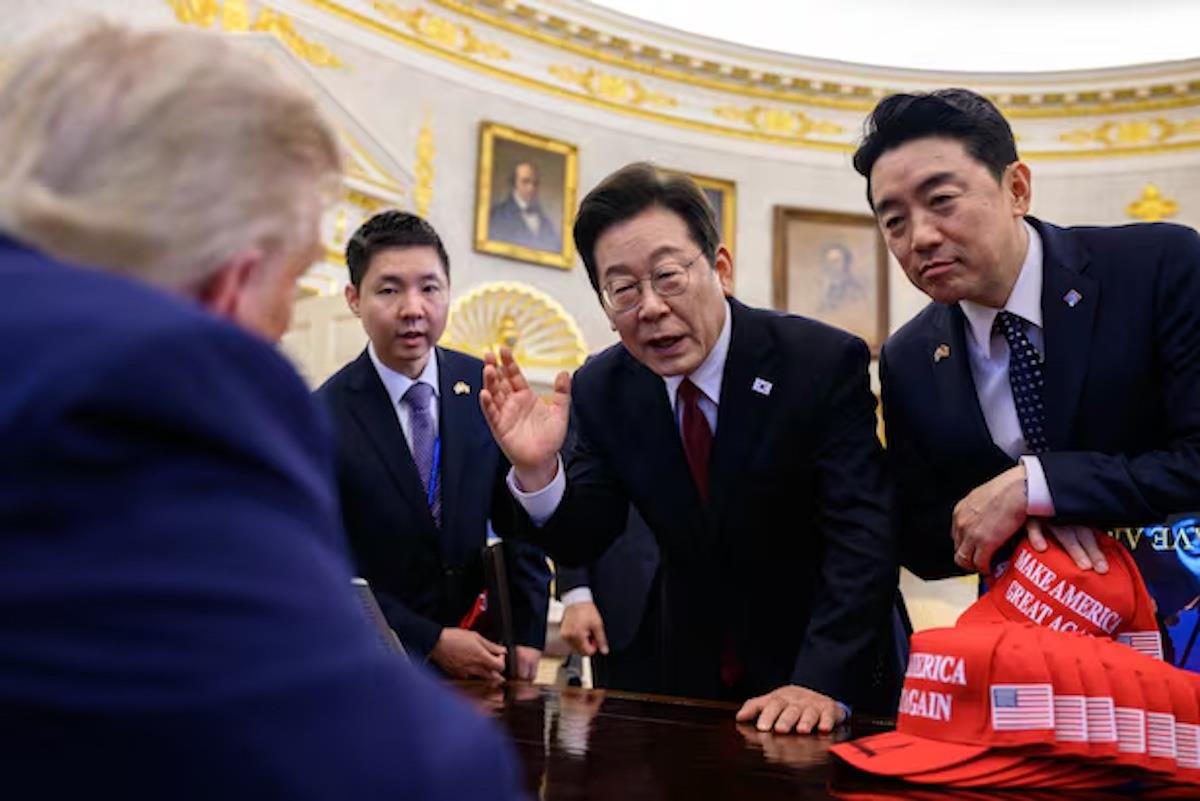
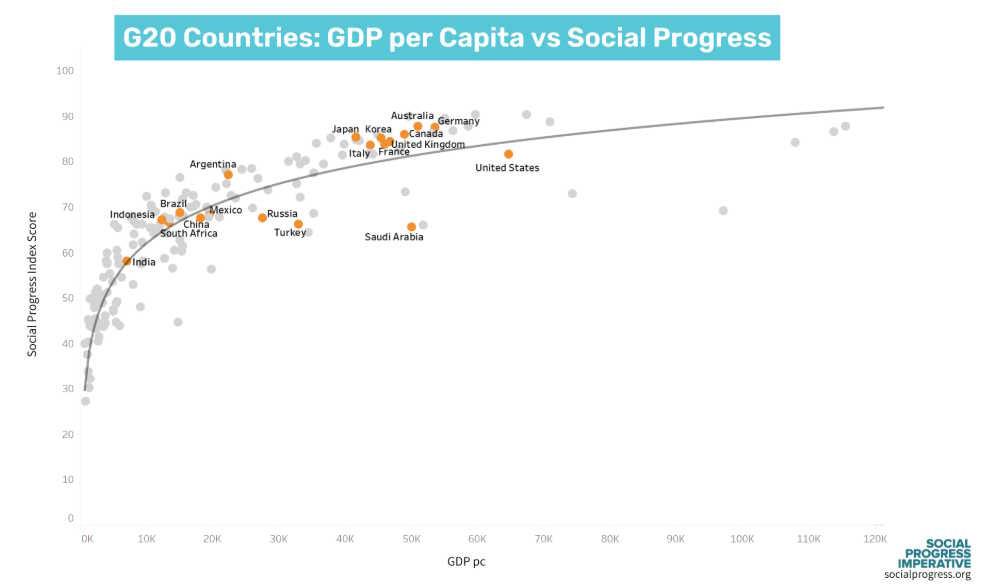
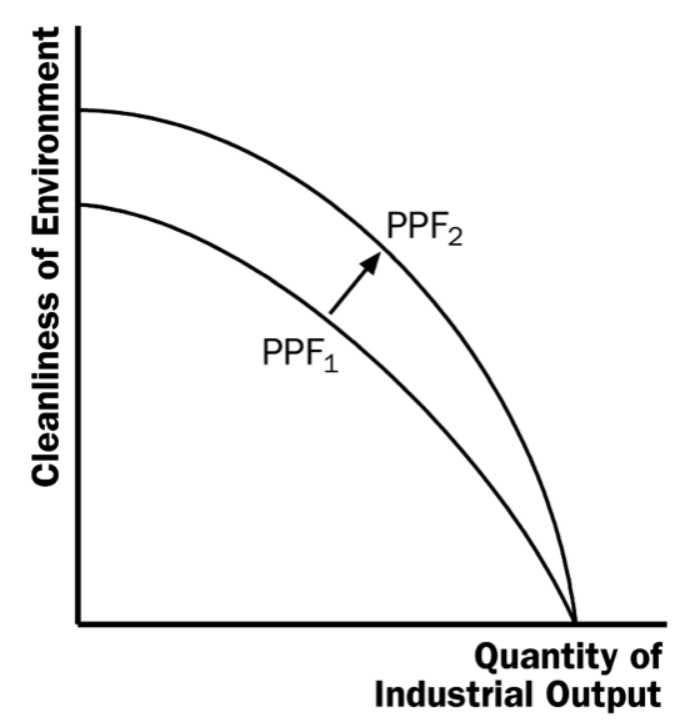

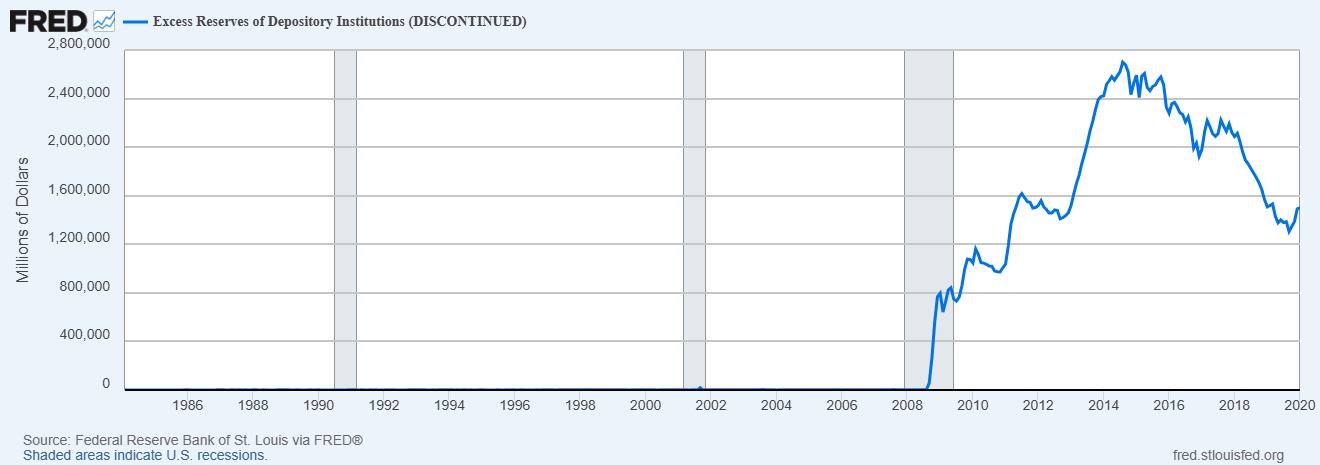

















Comments
No comment